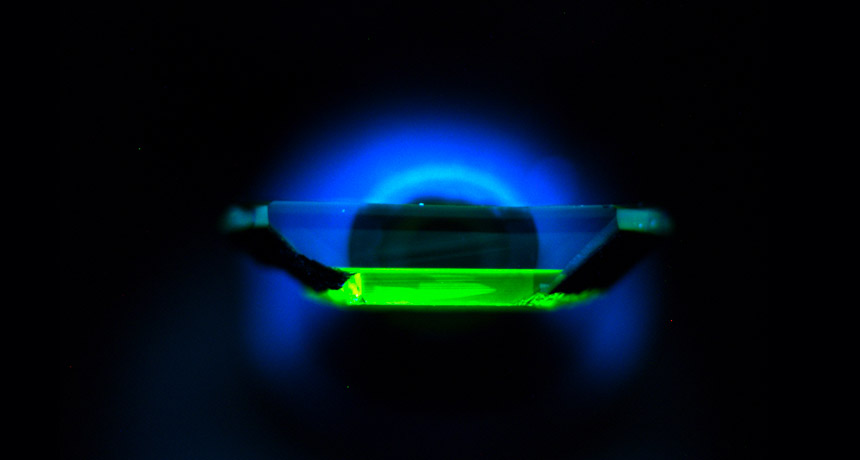Designer diamonds could one day help build a quantum internet
A defect-riddled, boron- and silicon-laced synthetic is a real gem at storing and sending data

GLITZY HARDWARE A new kind of human-made diamond (the clear material across the middle of this optical microscope image, measuring about 4 by 10 millimeters) laced with silicon and boron could be used to build better quantum memory devices.
Brendon Rose







